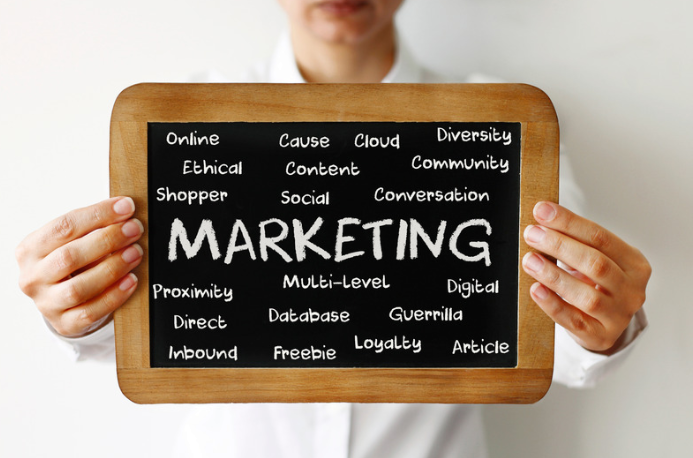It’s the question every business owner asks eventually—usually after a few campaigns fall flat or the newest trend doesn’t “hit” like it was supposed to:
What type of marketing should I actually be doing?
And honestly? That depends.
Not the most satisfying answer, we know. But it’s true—your ideal marketing strategy depends on what kind of business you run, who you’re trying to reach, how people buy from you, and what resources you actually have on hand.
There’s no universal blueprint. But there is a smarter way to approach the question—one that doesn’t rely on guesswork, endless experimentation, or jumping on the latest tactic because “everyone’s doing it.”
Let’s break it down.
Start With How Your Customers Make Decisions
Marketing isn’t just about what you’re promoting—it’s about how people choose to buy what you’re selling.
Do they shop fast, like grabbing coffee on the go? Or do they research, compare, and think about it for weeks?
If your offer is low-cost and low-risk (think t-shirts, car washes, or food delivery), then awareness and repetition are your best friends. Social media ads, local SEO, and influencer shoutouts work because they create a lot of small, fast impressions that lead to action.
But if your product or service is high-ticket or high-trust—like legal advice, HVAC installs, or consulting—then your marketing needs to do more than catch attention. It has to build trust. That’s when long-form content, video explainers, testimonials, webinars, and nurturing emails really matter.
So before you ask what to do, ask how your customers decide.
Are You Trying To Get Leads, Sales, Or Loyalty?
Next: what’s the actual job your marketing needs to do right now?
- If you need leads—think paid search, landing pages, lead magnets, and gated content.
- If you want sales—your focus shifts to conversion optimization, product pages, retargeting, and direct offers.
- If you’re building loyalty—email marketing, customer experience, and referral campaigns are your go-tos.
And here’s the twist: you probably need a little of all three. But depending on your growth stage or goals, one will always deserve more attention.
Trying to grow fast? Lead gen becomes king.
Stable but stagnant? Improve conversions.
Happy customers but no repeat buyers? Loyalty campaigns, stat.
Don’t Choose Channels Based On What’s Trendy
This one’s tough because the pressure is real.
You see your competitors crushing it on TikTok. A marketing friend swears by LinkedIn newsletters. Your cousin’s barber made $50K from one viral Instagram reel.
But none of that means you should do the same.
Channel choice should come down to two things:
Where your audience actually hangs out—and what kind of content you can produce well and consistently.
If your ideal customers read niche blogs and listen to long-form podcasts, a killer TikTok strategy won’t move the needle. If you sell impulse-buy items, Google Ads might be a better bet than SEO.
You don’t have to be everywhere. But you do need to be in the right places—consistently.
What About Content Marketing? Does It Still Matter?
Short answer: yes. But only if you treat it like a business function—not a “nice-to-have” side project.
Content still drives search visibility, supports social media, fuels email campaigns, and builds trust faster than any PPC ad ever could.
But it only works when it’s aligned with your sales funnel and done regularly. A blog post every six months doesn’t count. You need to show up like a media brand—reliably and with intent.
So if you’re not doing content yet, ask yourself:
- What questions do my customers ask over and over again?
- What objections stop them from buying?
- What stories build trust and differentiate us?
Then start publishing those answers. Not just content for content’s sake.
Paid Ads: Fast But Not Forever
Paid advertising can absolutely work—but it’s a rental, not a long-term investment.
Facebook Ads, Google Search, YouTube pre-roll—they all let you show up immediately in front of people who may want what you offer. That’s valuable, especially if you’re launching something new or need quick wins.
But remember: once you stop paying, you stop getting traffic.
The trick is to use paid ads strategically—to test messaging, scale what’s working, or plug short-term gaps—while also building longer-term assets like SEO content, email lists, and branded communities.
Paid media is like fuel. Organic marketing is the engine. You need both—but you should know which one you’re building for the long haul.
Ask What You’re Actually Good At
Sometimes the best marketing decision isn’t what should work—it’s what your team can actually execute well.
Have a team of strong writers? Lean into email, blogs, and SEO.
Great on camera? Build YouTube or short-form video content.
Obsessed with data? Paid media and CRO are probably your lanes.
Too many businesses fail not because they chose the wrong channel—but because they chose the right one that they couldn’t follow through on.
Execution beats theory—every single time.
So… What Type Of Marketing Should You Be Doing?
The real answer?
You should be doing the kind of marketing that:
- Meets your audience where they already are
- Matches how they decide to buy
- Focuses on your most urgent business goal
- Leverages your internal strengths
- Works with your current resources—not just ideal ones
That might mean running weekly Facebook Ads and improving your website copy. Or producing one high-quality blog per week while automating your email sequences. Or going all in on local SEO and building partnerships with nearby businesses.
It’s not about trends. It’s about traction.
Final Thought: Strategy First, Then Tactics
Don’t get lost in shiny tactics or platform fads.
Start with strategy: Who are we trying to reach, what do they care about, and how can we show up for them in a way that earns attention and trust?
Once you answer that—your ideal marketing mix usually becomes pretty clear.




